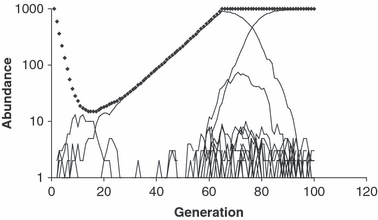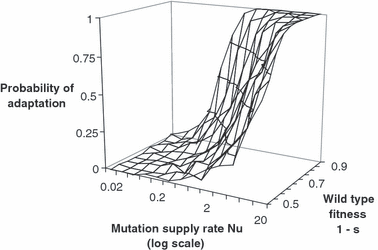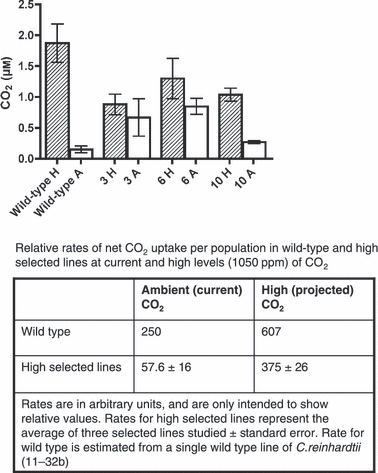Adaptation, extinction and global change
- PMID: 25567487
- PMCID: PMC3352406
- DOI: 10.1111/j.1752-4571.2007.00011.x
Adaptation, extinction and global change
Abstract
We discuss three interlinked issues: the natural pace of environmental change and adaptation, the likelihood that a population will adapt to a potentially lethal change, and adaptation to elevated CO2, the prime mover of global change. Environmental variability is governed by power laws showing that ln difference in conditions increases with ln elapsed time at a rate of 0.3-0.4. This leads to strong but fluctuating selection in many natural populations.The effect of repeated adverse change on mean fitness depends on its frequency rather than its severity. If the depression of mean fitness leads to population decline, however, severe stress may cause extinction. Evolutionary rescue from extinction requires abundant genetic variation or a high mutation supply rate, and thus a large population size. Although natural populations can sustain quite intense selection, they often fail to adapt to anthropogenic stresses such as pollution and acidification and instead become extinct.Experimental selection lines of algae show no specific adaptation to elevated CO2, but instead lose their carbon-concentrating mechanism through mutational degradation. This is likely to reduce the effectiveness of the oceanic carbon pump. Elevated CO2 is also likely to lead to changes in phytoplankton community composition, although it is not yet clear what these will be. We emphasize the importance of experimental evolution in understanding and predicting the biological response to global change. This will be one of the main tasks of evolutionary biologists in the coming decade.
Keywords: CO2; carbon cycle; environmental variability; evolutionary rescue; rapid evolution; stressful environment.
Figures





References
-
- De Baar HJW, Boyd PW, Coale KH, et al. Synthesis of iron fertilization experiments: from the iron age in the age of enlightenment. Journal of Geophysical Research. 2005;110:C09S16.
-
- Badger MR, Spalding MH. CO2 acquisition, concentration and fixation in cyanobacteria and algae. In: Leegood RC, Sharkey TD, Von Caemmerer S, editors. Photosynthesis; Physiology and Metabolism. New York: Kluwer Academic Publishers; 2000. pp. 369–397.
-
- Badger MR, Andrews TJ, Whitney SM, Ludwig M, Yellowlees DC, Leggat W, Price GD. The diversity and coevolution of Rubisco, plastids, pyrenoids, and chloroplast-based CO2 concentrating mechanisms in algae. Canadian Journal of Botany. 1998;76:1052–1071.
-
- Beardall J, Raven JA. The potential effects of global climate change on microalgal photosynthesis, growth and ecology. Phycologia. 2004;43:26–41.
-
- Beardall J, Johnston A, Raven J. Environmental regulation of CO2-concentrating mechanisms in microalgae. Canadian Journal of Botany. 1998;76:1010–1017.
LinkOut - more resources
Full Text Sources

